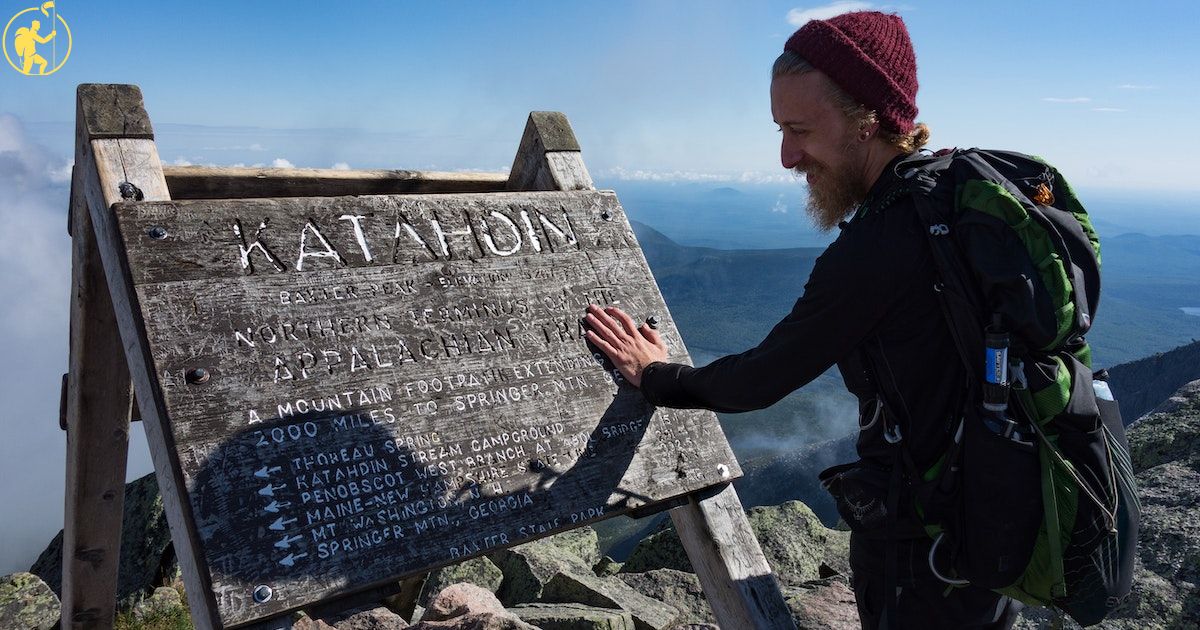The phrase How Long Does it Take To Hike the Appalachian Trail? refers to the time needed to complete this impressive 2,200-mile footpath, known as one of the longest continuous trails globally, winding through the eastern United States. For outdoor enthusiasts and hikers, it offers a challenging yet fulfilling journey.
If you are considering embarking on the adventure of trekking the Appalachian Trail, the question of how long it takes is both practical and aspirational. The answer varies based on individual preferences, physical fitness, and the chosen route. Let us delve into the factors influencing the time required to conquer this iconic trail.
Several elements, including your pace, weather conditions, and the specific section you choose to hike, contribute to the overall timeline. On average, completing the entire trial can take between five to seven months. Whether you are planning a thru-hike or a section hike, understanding these diverse factors impacting the duration will help you prepare for the challenges that await on the Mountainous Trail.
What states does the Appalachian Trail go through?
The Mountainous Trail winds through 14 states in the eastern United States, spanning over 2,000 miles from Georgia’s Springer Mountain to Maine’s Mount Katahdin. Along the way, hikers encounter diverse landscapes, from the southern mountains to the northern peaks.
Beginning in Georgia and passing through North Carolina, Tennessee, and Virginia, the trail showcases Southern charm. It then navigates through West Virginia, Maryland, and Pennsylvania, offering a variety of terrains. Continuing into New Jersey, New York, and Connecticut, hikers experience a blend of natural beauty and historical sites. Finally, the trail crosses Massachusetts, Vermont, and New Hampshire, and culminates in the rugged wilderness of Maine. The Appalachian Trail presents a challenging journey through the scenic wonders of the eastern U.S.
What to Expect on an AT Thru-Hike

Embarking on an Appalachian Trail (AT) thru-hike offers a transformative adventure covering around 2,000 miles, demanding both physical endurance and mental resilience. The journey encompasses diverse terrains, ranging from lush forests to challenging rocky ascents, creating a demanding yet rewarding experience.
Anticipate forming lasting connections with fellow hikers, establishing a tight-knit trail community. Embrace a simple yet fulfilling lifestyle where daily routines involve hiking, setting up camp, and connecting with nature. Prepare for unpredictable weather, ranging from scorching heat to cold, introducing an element of unpredictability to the journey. Success in an AT thru-hike involves embracing the simplicity of trail life and adapting to ever-changing conditions.
When should you start thru-hiking the AT

Selecting the optimal time to kick off a thru-hike on the Appalachian Trail (AT) involves considering several factors. For many thru-hikers, the journey begins in the spring, typically in March or April. This timing ensures milder weather in the southern states, like Georgia, offering a more comfortable start to the hike.
Commencing in March also helps avoid the extreme winter conditions in the northern sections, such as New Hampshire and Maine, where snow and harsh weather can persist into May. However, it’s crucial to be mindful of the “bubble” – the peak period when numerous thru-hikers start, potentially leading to crowded trail conditions and competition for camping spots. Some prefer a late-spring start, striking a balance between favorable weather and a less crowded trail. Ultimately, the decision hinges on personal preferences, fitness level, and tolerance for different weather conditions.
Start Date for North bounders
For those planning to hike the Appalachian Trail (AT) from south to north, it’s often recommended to start in the spring, typically between late March and early April. This timing ensures a milder climate in the southern states, such as Georgia, providing a comfortable beginning to your hike.
Starting in this season helps avoid the harsh winter weather in the northern sections, making the trek safer and more enjoyable. However, your specific start date can be influenced by personal preferences and circumstances. Some hikers might opt to begin a bit earlier or later, depending on their weather preferences and desired trail experiences. Keep in mind factors like the trail’s “bubble,” which can affect campsite availability and resources during peak hiking periods.
Going Northbound vs. Southbound on the Appalachian Trail
| Aspect | Northbound Adventure | Southbound Exploration |
| Start Point | Springer Mountain, Georgia | Mount Katahdin, Maine |
| Start Time | Spring – March/April | Summer – June/July |
| Terrain | Varied, moderate to challenging | Rugged start in Maine, gradual ease |
| Weather | Mild to cold transition | Encounter wildlife in the northern wilderness |
| Community | Join a bustling “bubble” of hikers | Enjoy solitude with fewer fellow hikers |
| Wildlife Encounters | Southern forests teeming with wildlife | Encounter wildlife in northern wilderness |
| Mental Challenge | Mental fortitude builds along the way | Immediate physical and mental challenges |
| Scenic Views | Scenic build-up as you head north | Immediate access to awe-inspiring views |
Pros and Cons of Hiking Northbound on the AT
Pros of Hiking Northbound on the AT:
- Classic Route: Follow the well-known path from Georgia to Maine.
- Community Feels: Join a large group of hikers for camaraderie.
- Scenic Progression: Experience a gradual increase in beautiful landscapes.
- Gentler Start: Begin with comfortable temperatures in the South.
Cons of Hiking Northbound on the AT:
- Trail Crowds: Encounter potential overcrowding during peak months.
- Colder Northern Weather: Face chillier conditions as you head north.
- Challenging Conclusion: Finish with more demanding terrains in New England.
- Late Snow Risk: Deal with possible lingering snow in the North.
Pros and Cons of Hiking Southbound on the AT
Pros of Hiking Southbound on the AT:
- Solitude Bliss: Enjoy quieter trails with fewer fellow hikers.
- Immediate Scenic Views: Access stunning landscapes right from the start.
- Warm Kick-off: Begin with pleasant temperatures in Maine.
- Gradual Terrain Easing: Start with challenging terrain, gradually becoming more manageable.
Cons of Hiking Southbound on the AT:
- Fewer Trail Companions: Encounter fewer fellow hikers along the way.
- Challenging Initial Stages: Face rugged terrains in the northern wilderness.
- Limited “Bubble” Experience: Miss out on the camaraderie of a large hiker community.
- Cooler Finish: Experience cooler weather as the journey progresses.
What Are the Best Sections of the Appalachian Trail?

The Appalachian Trail features numerous breathtaking sections worth exploring. One standout is the Great Smoky Mountains National Park, known for its diverse ecosystems and stunning vistas. Another gem is the White Mountains in New Hampshire, offering challenging terrains and panoramic views.
Heading south, Shenandoah National Park in Virginia offers a scenic stretch with its lush forests and wildlife encounters. Additionally, the picturesque beauty of Grayson Highlands State Park in Virginia captivates hikers with its open meadows and wild ponies. These sections showcase the diverse and awe-inspiring landscapes that make the Mountainous Trail a memorable adventure.
How to Prepare for Thru-Hiking the Appalachian Trail
Embarking on a thru-hike of the Appalachian Trail demands thorough preparation for a successful journey. Start by researching essential gear, such as a lightweight backpack and durable hiking boots. Make sure your gear is versatile enough for various weather conditions you may encounter on the trail. Plan your route, considering daily mileage and potential campsites, using maps and trail guides for guidance.
Physical conditioning is paramount. Gradually build your stamina through regular hikes and cardio exercises. Familiarize yourself with basic survival skills, such as purifying water and setting up a shelter. Mental preparation is equally crucial; embrace the challenges and maintain a positive mindset throughout the adventure. By addressing these key aspects, you’ll be well-prepared to tackle the Mountainous Trail with confidence and enjoy the journey to the fullest.
Do I Need a Permit to Hike the AT:
If you plan to hike the Mountainous Trail (MT), permits vary. Some sections require permits, while others do not. Check specific trail regulations before starting your journey. Regulations may change, so stay informed for a smooth hiking experience.
Before embarking on the AT, research permits for each section. Respect trail rules to preserve the environment and ensure a hassle-free hike. Stay prepared by understanding the permit requirements for a fulfilling Appalachian Trail adventure.
Do I need to register my thru-hike?

Planning a thru-hike? Wondering about registration? Generally, you don’t need to register. Thru-hiking trails like the Appalachian Trail or Pacific Crest Trail don’t require formal registration. However, some areas may have specific rules, so check local regulations. It’s vital to respect trail guidelines for a smooth and enjoyable experience.
Keep in mind, that registration may be necessary in certain cases. National parks or protected areas may require permits for thru-hikers. Research your trail and always follow Leave No Trace principles. Ultimately, preparation and awareness ensure a successful and respectful thru-hiking experience.
Packing the Absolute Necessities
When it comes to packing, prioritize the essentials for seamless travel experiences. Begin with versatile clothing suitable for various occasions, and include comfortable shoes for walking long distances with ease. Don’t overlook personal hygiene items like a toothbrush and toiletries. Remember to pack any necessary medications and first aid supplies. Consider adding a travel-sized umbrella for unexpected weather changes. Keep important documents like passports and IDs easily accessible. Lastly, pack snacks to stay energized during your journeys.
Efficient packing ensures stress-free travels and enjoyable experiences. Opt for lightweight and compact items to save space in your luggage. Roll clothes to maximize packing efficiency and minimize wrinkles. Use packing cubes or bags to organize belongings neatly. Keep electronics and chargers in a separate, easily accessible pouch. Pack a reusable water bottle to stay hydrated throughout your journey. Double-check your packing list to avoid forgetting any essentials. With careful planning, packing becomes a simple and hassle-free task.
Where do I find water on the AT?
Hikers often wonder, “Where do I find water on the AT?” Along the Appalachian Trail, water sources are plentiful. Natural springs, streams, and designated water points ease your hydration concerns. Carrying a water filter is crucial, ensuring safe and accessible water throughout.
On the AT, reliable water is found every 5 to 10 miles. Plan accordingly. Always check updated trail guides for the latest water source information. Familiarize yourself with water purification methods to stay safe and hydrated. Keep a refillable water bottle to minimize environmental impact and promote sustainability. Happy hiking!
How much should a thru-hikers backpack weigh?

Choosing the right backpack weight is crucial for thru-hikers’ comfort. The ideal weight for a thru-hikers backpack typically ranges from 20 to 30 pounds. This weight includes the backpack itself, gear, and provisions for the journey. Keeping the backpack weight within this range ensures that hikers can cover long distances without straining their bodies.
Thru-hikers must prioritize essentials like a lightweight tent, sleeping bag, and cookware. Investing in ultralight gear helps maintain the recommended backpack weight. Hikers need to evaluate their gear and make thoughtful choices to strike the right balance between comfort and necessity. Ultimately, a well-planned and appropriately weighted backpack contributes significantly to a successful and enjoyable thru-hiking experience.
Designating a Support Person at Home
Designating a support person at home is crucial for various reasons. Selecting a reliable individual ensures assistance during challenging times. This support person should be trustworthy, familiar with your routines, and capable of handling emergencies.
Communicate openly with your chosen support person about your needs and expectations. Share important information, such as emergency contacts and essential tasks, to enable a smooth support system. Regular check-ins and clear communication with your designated support person create a reliable network, providing peace of mind for both parties. Designating a support person at home is a proactive step toward building a strong and dependable support system for any unforeseen circumstances.
Training for the Appalachian Trail
Prepare physically with hiking and strength exercises. Familiarize yourself with trail challenges. Cultivate a positive mindset for mental resilience. Efficient packing and research are crucial for success.
Choose lightweight, durable gear for comfort. Prioritize essentials like a quality backpack and sturdy boots. Consider weather conditions and conduct gear tests. Acquire basic repair skills for unexpected issues. Proper gear preparation ensures a safe, enjoyable Appalachian Trail experience.
Strength
Strength is the force within us that propels resilience and determination. It’s the innate ability to overcome challenges, showcasing one’s inner fortitude. In times of adversity, strength becomes a guiding light, empowering individuals to push through obstacles. It is the foundation of confidence, allowing us to face uncertainties with unwavering courage. When harnessed, strength transforms hurdles into stepping stones, fostering personal growth and resilience.
This intrinsic quality manifests in various forms, both physical and mental. Physical strength enables individuals to endure demanding tasks and maintain a healthy lifestyle. Mental strength, on the other hand, empowers us to navigate complex emotions and make rational decisions. Combined, these facets of strength create a formidable foundation for navigating life’s twists and turns. In essence, strength is the silent force that propels us forward, shaping our character and defining our journey.
Prepare your feet

Taking care of your feet is essential for overall well-being. Begin by soaking your feet in warm water to relax muscles and soften skin. Gently scrub with a foot brush or pumice stone to remove dead skin, promoting a healthier appearance. Trim your toenails straight across to prevent ingrown nails and discomfort. Lastly, moisturize your feet to keep them hydrated and prevent dryness and cracks.
Investing a few minutes in a foot care routine pays off. Regularly inspect your feet for any signs of infection or abnormalities. Choose comfortable and supportive footwear to prevent discomfort and maintain proper foot health. Taking these simple steps ensures your feet stay happy and healthy.
Hiking for Fitness
- Explore Nature: Hiking lets you enjoy the great outdoors while staying active.
- Cardio Workout: Hiking uphill improves cardiovascular health and endurance.
- Muscle Engagement: Trekking on varied terrains engages different muscle groups for overall fitness.
- Stress Relief: Connecting with nature during hikes reduces stress and boosts mental well-being.
- Calorie Burn: Hiking burns calories, aiding weight management and promoting a healthy lifestyle.
How many shelters are there on the Appalachian Trail?
The Appalachian Trail boasts numerous shelters, providing hikers with essential resting spots. These shelters, strategically placed along the trail, offer protection from the elements. Hikers can find approximately 250 to 270 shelters, each equipped with sleeping platforms and a communal atmosphere, enhancing the trail experience.
These shelters are maintained by dedicated volunteers and organizations, ensuring they remain accessible and safe. Hikers often rely on these shelters as waypoints during their journey, creating a sense of community among those traversing the Mountainous Trail.
Should I use a shelter or a tent on the AT?

Choosing between a shelter and a tent on the Appalachian Trail (AT) depends on personal preferences and hiking style. Shelters offer communal spaces, eliminating the need to carry a tent, but they can be crowded. Tents provide privacy and flexibility but require carrying extra weight.
Consider your comfort preferences when deciding between a shelter and a tent. Shelters offer a communal experience, providing a social atmosphere with fellow hikers. However, if you prioritize solitude and want more control over your sleeping space, a tent may be the better option. Ultimately, the choice between a shelter and a tent on the AT boils down to personal preference and the experience you seek on your hiking journey.
How much does it cost to hike the Appalachian Trail?
The cost of hiking the Appalachian Trail (AT) varies based on personal choices and preferences. On average, budget-conscious hikers may spend around $1,000 per month on trail-related expenses. This includes food, gear, and occasional lodging. However, some hikers with more luxurious preferences or specific gear needs might spend upwards of $5,000 for a complete thru-hike.
Expenses on the AT primarily consist of food, gear, and occasional town stays. Budgeting wisely and being mindful of spending habits can help control costs during the journey. Keep in mind that individual spending can vary, so it’s essential to plan according to personal preferences and financial circumstances.
FAQ’S
How much money do you need to hike the Appalachian Trail?
Budget around $1,000 per month for food, gear, and occasional lodging on the Appalachian Trail.
How many miles a day can you hike on the Appalachian Trail?
Hikers on the Appalachian Trail typically cover 10 to 20 miles per day, depending on various factors.
Conclusion
In conclusion, the Appalachian Trail emerges as more than just a physical challenge—it’s a canvas for personal exploration. As we’ve walked through the varying landscapes and considerations affecting the duration of the hike, a silent question lingers: What facets of this remarkable journey resonate with your spirit of adventure? The trail’s allure isn’t merely about miles covered but the untapped potential and self-discovery awaiting those who dare to embark on this transformative odyssey.
The Appalachian Trail, stretching from Georgia to Maine, weaves a narrative of endurance and connection with nature. Beyond the logistics of its length, the trail prompts contemplation about one’s readiness for such an adventure. As we conclude this exploration, consider the echoes of personal growth and the allure of the trail that may have sparked within. When thoughts of the Appalachian Trail cross your mind, what inner landscapes of endurance and self-discovery awaken, quietly inviting you to embrace the journey?

J.K. Rolowing, an avid hiking enthusiast with 8 years of experience, blends passion and nature in captivating tales. Embracing the trail, weaving adventures through words.











